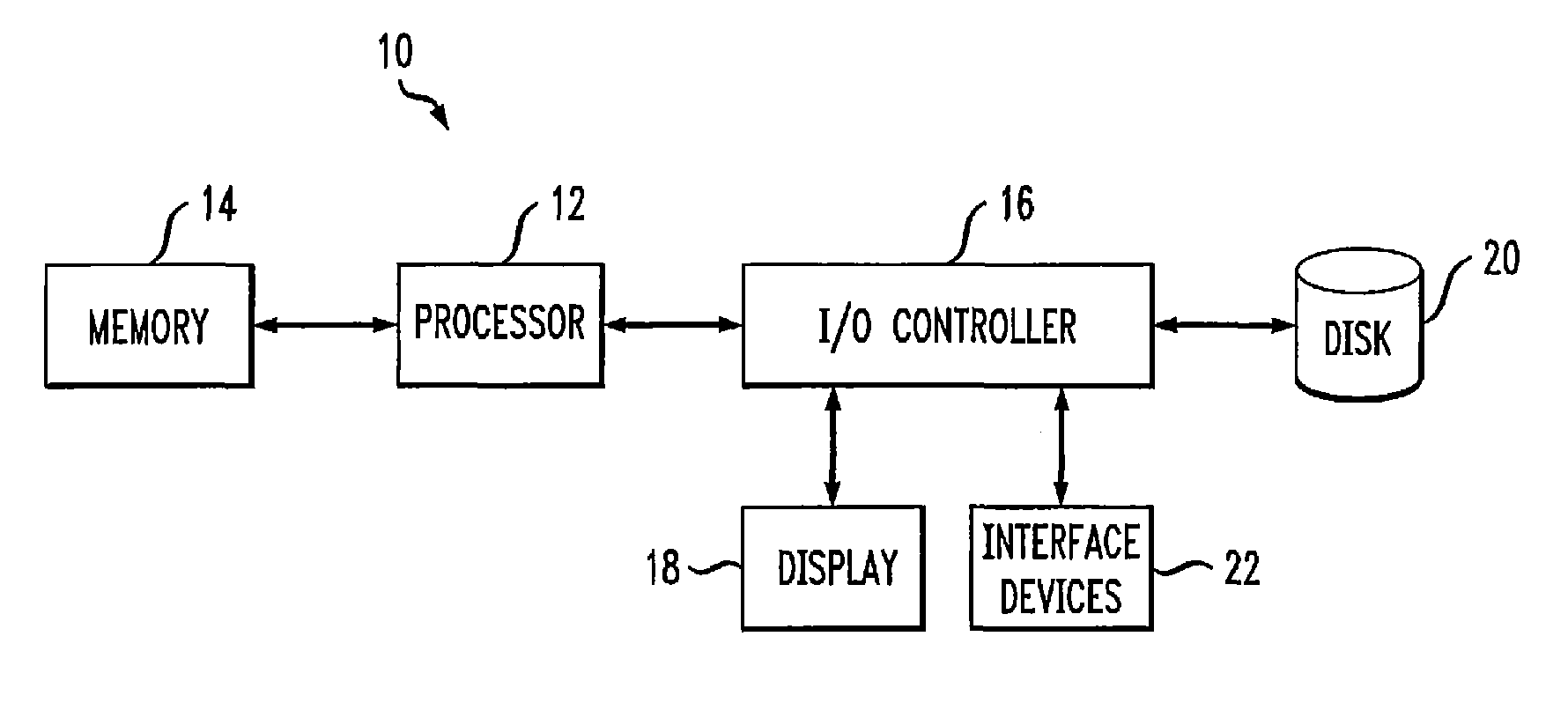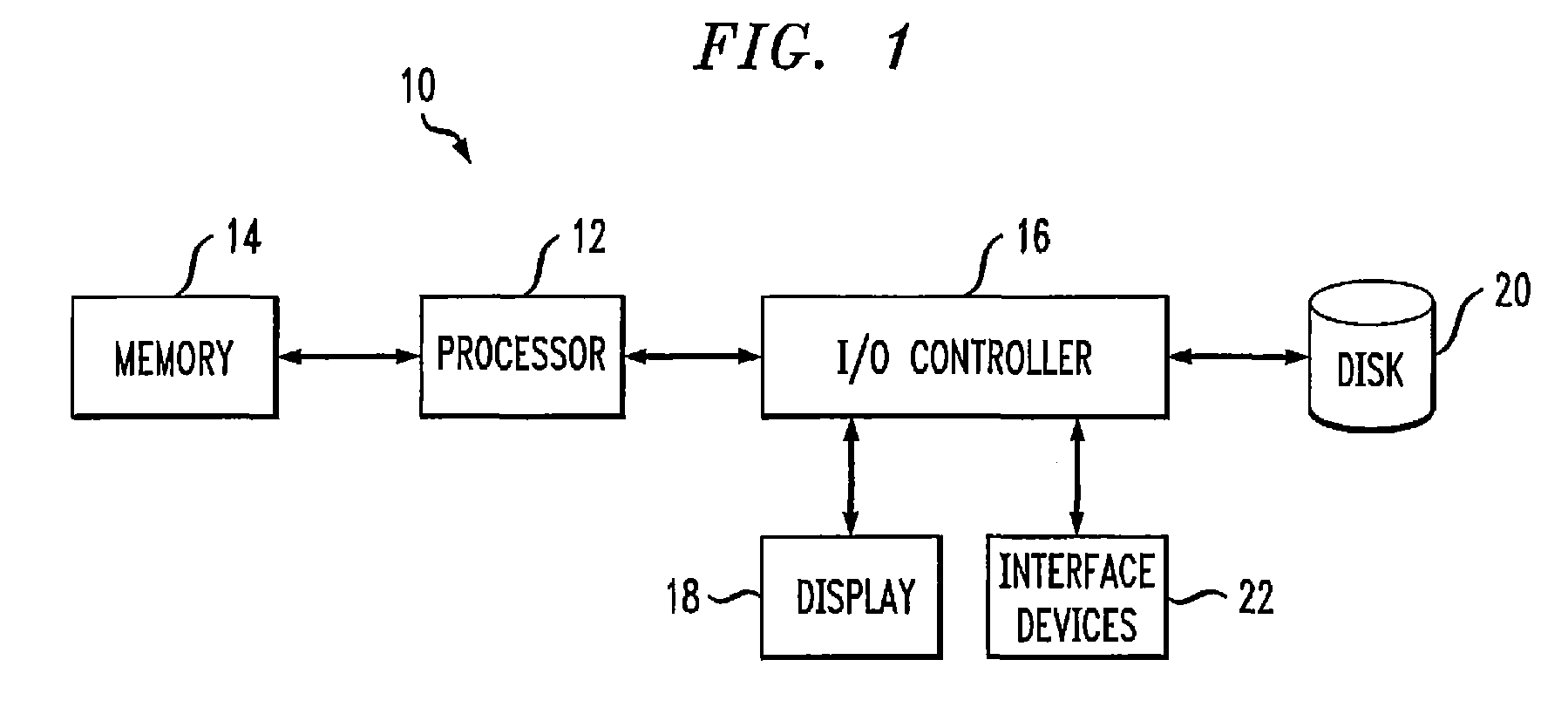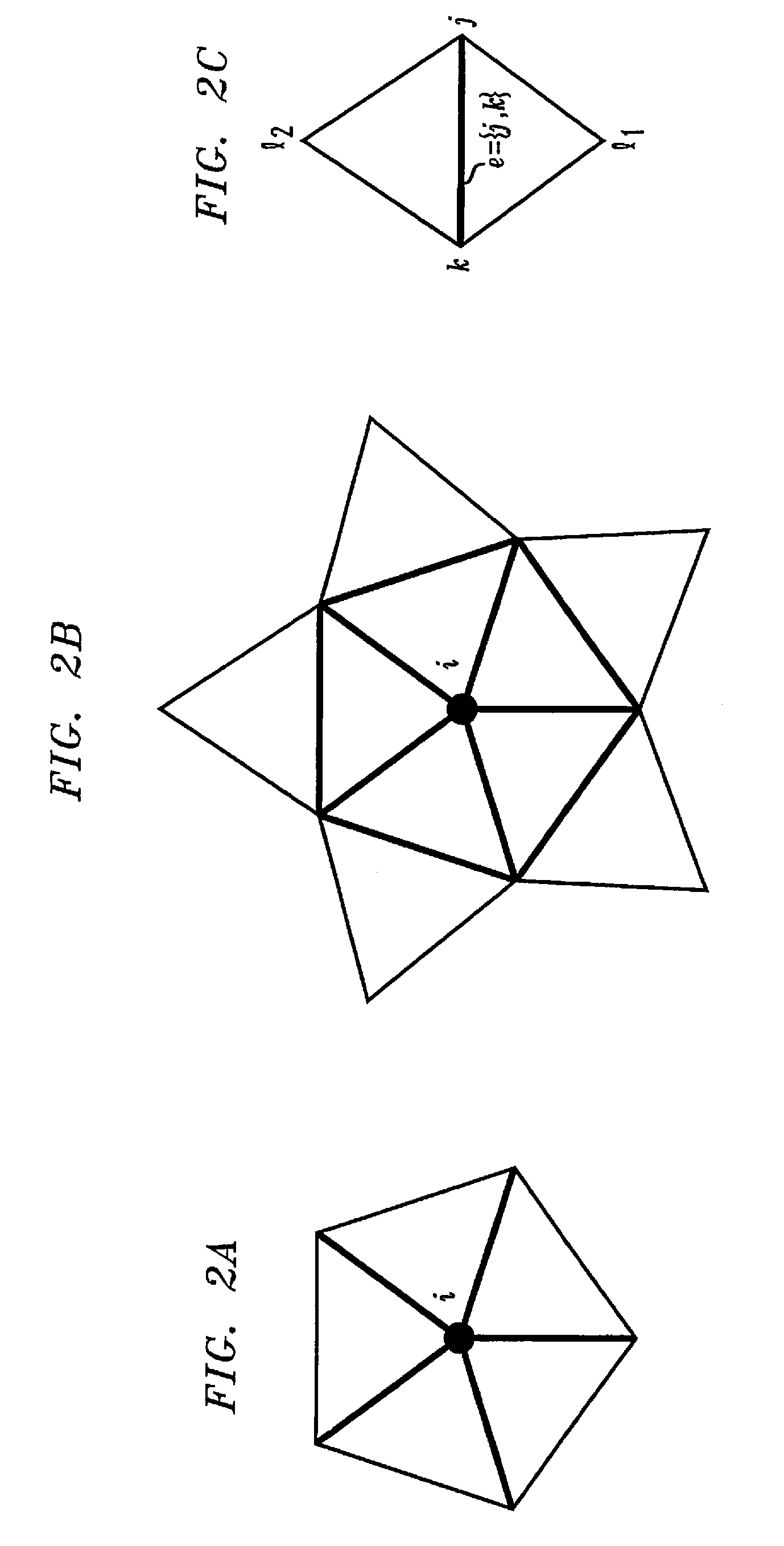Non-uniform relaxation procedure for multiresolution mesh processing
a multi-resolution, non-uniform relaxation technology, applied in the field of surface data processing techniques, can solve the problems of non-smooth parametric non-smoothness with undesirable consequences for further processing, difficult handling of irregular connectivity dense meshes, and difficult to achieve the effect of reducing the number of meshes
- Summary
- Abstract
- Description
- Claims
- Application Information
AI Technical Summary
Benefits of technology
Problems solved by technology
Method used
Image
Examples
Embodiment Construction
[0026]The present invention will be illustrated below in conjunction with exemplary processing techniques applied to surface data in the form of meshes of triangles. It should be understood, however, that the disclosed techniques are suitable for use with a wide variety of other representations of surface data and in numerous other applications. For example, the invention can be applied to surface data in forms other than a mesh of triangles, and can be applied to surface data of more than three dimensions. The term “mesh” as used herein refers to any set of interconnected vertices or other data points which is representative of a surface.
1. Exemplary Mesh Processing System
[0027]FIG. 1 shows an exemplary mesh processing system 10 in which the invention can be implemented. The system 10 includes a processor 12 coupled to a memory 14 and an input / output (I / O) controller 16. The I / O controller 16 in conjunction with the processor 12 directs the operation of a number of peripheral compo...
PUM
 Login to View More
Login to View More Abstract
Description
Claims
Application Information
 Login to View More
Login to View More - R&D
- Intellectual Property
- Life Sciences
- Materials
- Tech Scout
- Unparalleled Data Quality
- Higher Quality Content
- 60% Fewer Hallucinations
Browse by: Latest US Patents, China's latest patents, Technical Efficacy Thesaurus, Application Domain, Technology Topic, Popular Technical Reports.
© 2025 PatSnap. All rights reserved.Legal|Privacy policy|Modern Slavery Act Transparency Statement|Sitemap|About US| Contact US: help@patsnap.com



